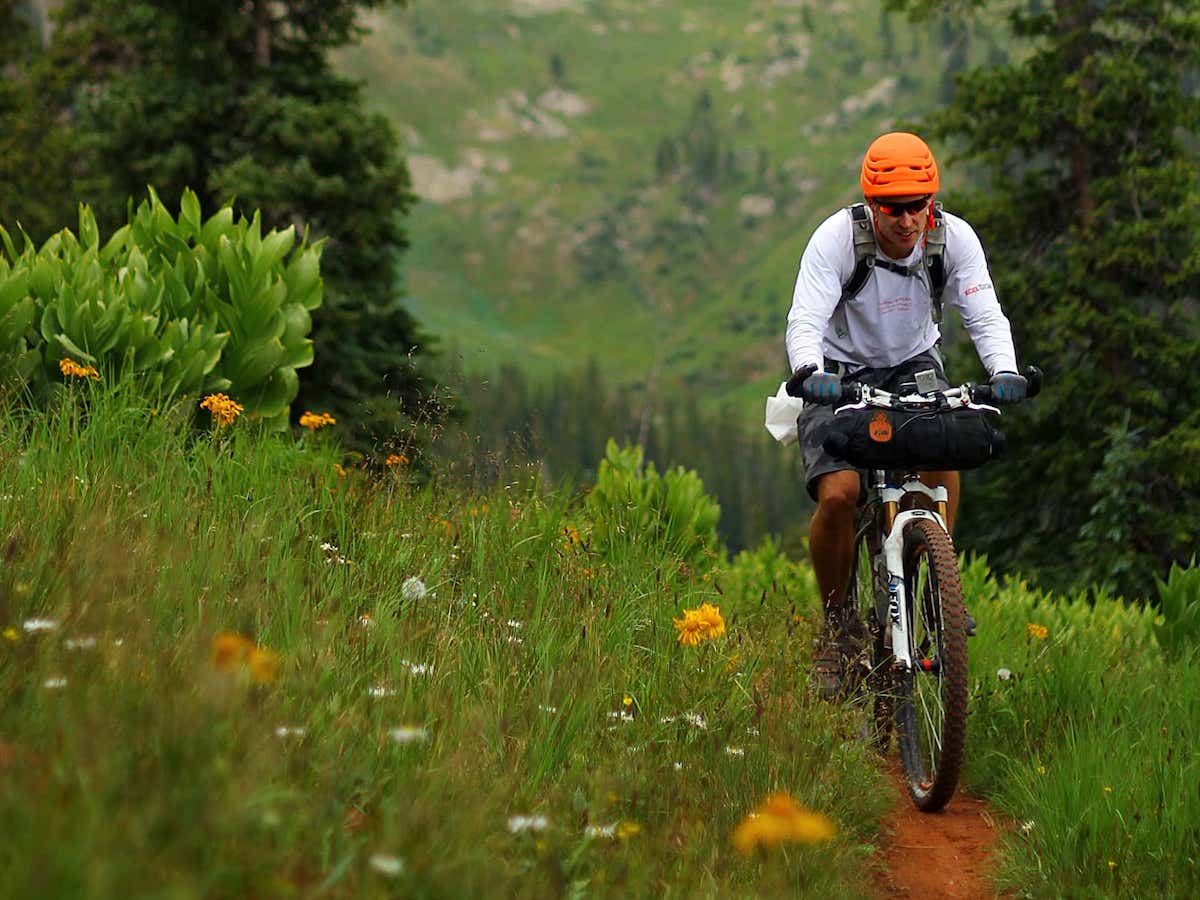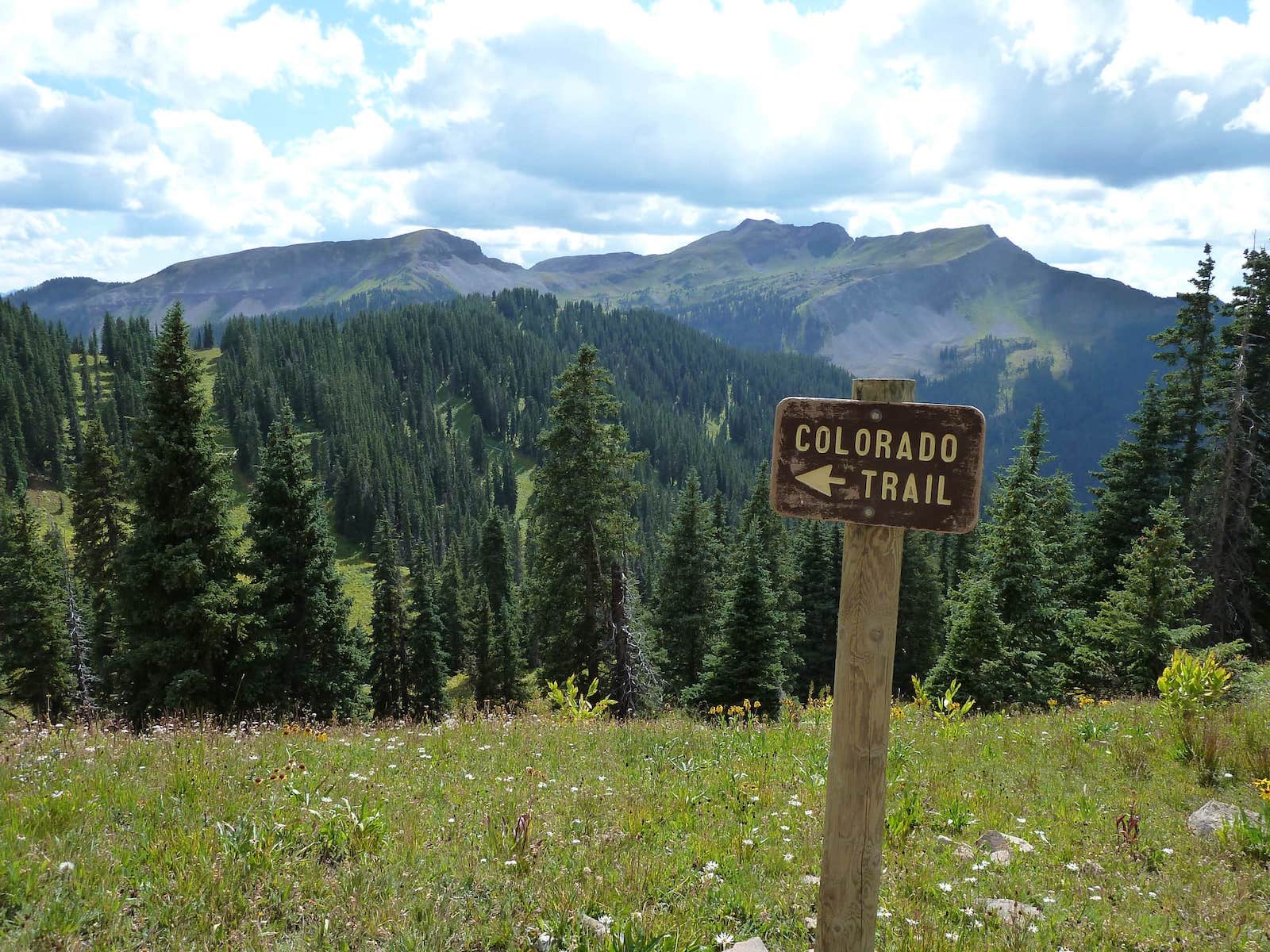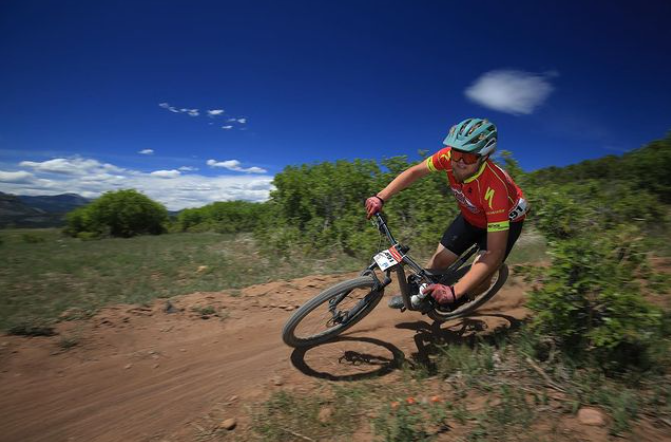Bikepacking routes: The Colorado Trail
The Colorado Trail is a 500-mile singletrack route through the heart of Colorado's mountains

The state of Colorado is already known as a top destination for mountain bikers. From lift-served downhill bike parks to alpine singletrack in Crested Butte and desert riding in Fruita, nearly every corner of the state has riding nearby.
For bikepackers, one route rises above all the rest. The Colorado Trail starts near Denver and is connected to Durango by roughly 500 miles of singletrack and tens of thousands of feet of climbing. There are certainly longer bikepacking routes, but this trail challenges riders with its terrain. The trail’s average elevation is about 10,300 feet above sea level, with its highest point reaching 13,271 feet at Coney Summit.
The Colorado Trail was conceived in the 1970s, and over the next two decades, volunteers mapped, marked, and built the trail, led in large part by Gudrun “Gudy” Gaskill. The trail was completed end-to-end in 1987, creating a route through the state for bikers, hikers and equestrians. Today, trail upkeep and maintenance is done by more than 600 volunteers and 1,500 donors, led by the non-profit Colorado Trail Foundation as well as the United States Forest Service.
In addition to crossing multiple mountain ranges, the trail crosses five national forests, five major river systems, and six federal wilderness areas. Wilderness areas are designated by the United States Congress and are one of the highest protections of land in the country. The Wilderness Act of 1964 created the legal framework for these protected areas, which are described as “an area where the earth and its community of life are untrammeled by man, where man himself is a visitor who does not remain.” Because mechanized travel methods like mountain bikes are not allowed, this means that bikepackers must detour around these sections of the trail.
The trails can be traveled from north to south, or vice versa. The northern terminus of the trail is located at Waterton Canyon, just over a 30-minute drive from central Denver. The southern terminus is located at Junction Creek, about five-miles from downtown Durango.
Jesse Jakomait currently holds the fastest known time for biking the trail, which he set in 2015 by starting in Durango and arriving in Denver 3 days, 20 hours, and 44 minutes later. He reportedly only slept for a few hours across the nearly-four-day effort. Bikepackers looking for a more leisurely journey can expect the route to take anywhere from one to three weeks.
You don’t have to be a bikepacker to enjoy this high-elevation trail, though. Luckily, tons of other trails branch out from the Colorado Trail, so riders can pick from plenty of loops or out-and-back rides that can be completed in a day rather than multiple days.

What do you need to ride the Colorado Trail?
We’d suggest starting with having a look at our bikepacking essentials list of gear and supplies. The trail is not a beginner route, so your bikepacking setup will need to be dialed before you even start. Most people opt for a full-suspension mountain bike, since the trail has so much chunky technical terrain and many long descents.
It’s the mountainous nature of the route that makes it so challenging, yet so appealing. Deep green forests give way to meadows dotted with colorful wildflowers. Much of the trail is above treeline, where you can experience sweeping views while being exposed to the elements. Wind and rain are nearly guaranteed, while hail, snow, and lightning are possible too. There will be a plethora of wildlife, including black bears, elk, and even rattlesnakes.
Because the trail literally crosses mountain ranges, the majority of the route will see riders either climbing uphill or descending. This means that riders need to have good base fitness and the strength to climb for long distances with their bikes loaded down with gear. They also must have great handling skills, as the descents are long and technical. There are multiple sections that even the fittest riders prefer to hike-a-bike, and snowbanks may still be present deep into the summer season.
Another major factor is riding at elevation. Preparing for the lack of oxygen at high elevations is a must before riding the Colorado Trail. Even the simplest rides at elevation can be incredibly difficult. Riders who already live at higher altitudes will be better suited, but super high-altitude riding above 10,000 feet is a whole different experience. In the worst cases, riders might experience altitude sickness, which in rare cases can be deadly.

Building the trail was a massive effort from people around the state, and it’s still a massive effort to maintain and improve the trail every year. The effort does come with a benefit, however, with riders coming from all over the world to ride it, spending money at restaurants, gas stations, hotels, and bike shops along the way.
The concept of gateway communities can be applied to the towns along the route. Gateway communities are the cities or towns directly adjacent to major tourist attractions. Moab, Utah is the gateway to Arches National Park, as well as famous mountain bike trails like The Whole Enchilada. These communities receive the economic benefit of increased visitation, but similar to some of the most popular tourist cities in the world, there are always concerns about overcrowding and the problems that come with it, like a dearth of affordable housing for locals.
In the case of the Colorado Trail, even self-supported bikepackers stop in towns along the route to resupply their food and supplies. Other riders may stay in these towns for a few days completing some of the one-day routes that branch out from the trail.
While the Colorado Trail is a challenge for even the most experienced bikepackers, a shorter one- or two-night trip on the trail may be more attainable for those wishing to see what it’s like. Plus, the abundance of routes that are linked to the trail and in the surrounding areas offers great riding for anybody.
Ryan Simonovich has been riding and racing for nearly a decade. He got his start as a cross-country mountain bike racer in California, where he cultivated his love for riding all types of bikes. Ryan eventually gravitated toward enduro and downhill racing but has also been found in the occasional road and cyclo-cross events. Today, he regularly rides the trails of Durango, Colorado, and is aiming to make a career out of chronicling the sport of cycling.
Rides: Santa Cruz Hightower, Specialized Tarmac SL4

